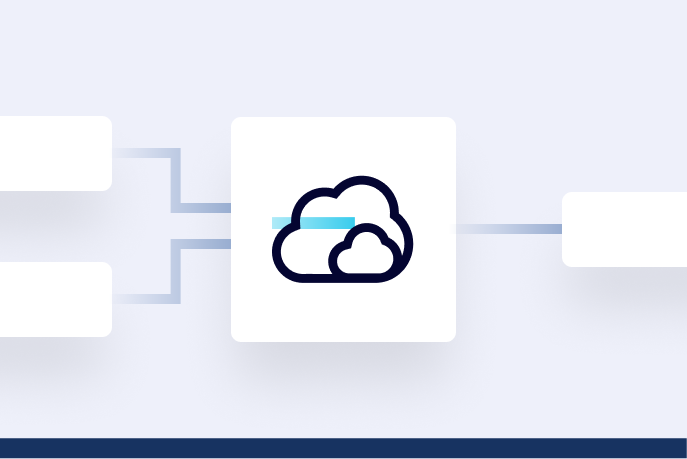[Live Demo] Tableflow, Freight Clusters, Flink AI Features | Register Now
Solutions
Announcing the Confluent for Startups AI Accelerator Program: Empowering the First Generation of Real-Time AI Startups
The Confluent for Startups AI Accelerator Program is a 10-week virtual initiative designed to support early-stage AI startups building real-time, data-driven applications. Participants will gain early access to Confluent’s cutting-edge technology, one-on-one mentorship, marketing exposure, and...
Building AI Agents and Copilots with Confluent, Airy, and Apache Flink
Airy helps developers build copilots as a new interface to explore and work with streaming data – turning natural language into Flink jobs that act as agents.
Introducing Build with Confluent: Enabling Partners to Bring Data Streaming Use Cases to Market Faster
Build with Confluent helps system integrators develop joint solutions faster, including specialized software bundles, support from data streaming experts to certify offerings, and access to Confluent’s Go-To-Market (GTM) teams to amplify their offering in the market.
Revolutionizing FinTech: Kredivo’s Growth with Data Streaming
At the Singapore Data in Motion Tour stop, keynote speaker and Confluent cofounder Jun Rao helped break down the history of Kafka and explain how Confluent got started on its mission to modernize data flows...
Easy and Instant Insurance Quotes Using Data Streaming with Confluent Cloud
The insurance industry, like other traditional sectors, is no stranger to the rapid technology-driven change in consumer expectations. If these companies don’t keep pace, they risk an eroding customer base and lost revenue to more nimble and innovative competitors.
How to Deliver Real-Time Mobile Personalization at Scale
In today’s hyper-connected era, customers demand nothing less than instant access to tailor-made, meaningful content that resonates with their individual needs and preferences. This post details how organizations can leverage the power of cloud-native data streaming in Confluent Cloud...
How Alex Bank Built a Real-Time Banking Experience with Confluent
Most people are not jumping for joy at the prospect of taking out a loan, or even going to the bank. If anything, banking is a chore (and not a very exciting one). But what if banking was fast, simple, and easier to understand?
Real-Time AI: Live Recommendations Using Confluent and Rockset
Real-time AI is the future, and AI/ML models have demonstrated incredible potential for predicting and generating media in various business domains. For the best results, these models must be informed by relevant data.
Two Ways to Build Event-Driven Serverless Applications Using Confluent Cloud and AWS Lambda
AWS Lambda is a serverless, event-driven compute service that lets you run code for virtually any type of application or backend service. Lambda functions and Kafka topics can be combined to build scalable event-driven architectures that can fit many use cases across almost any industry.
Real-time Order Notifications: How ACERTUS Drives Customer Updates with Confluent
Today’s consumers expect to be kept updated on the status of their orders 24/7. Whether they’re requesting a ride, receiving a package, or purchasing items online, they want to know the current status without having to contact sellers directly.
No Data, No AI. Introducing Data Streaming for Actionable Intelligence with AI
It is well understood that the promise of artificial intelligence (AI) is dependent on careful curation and management of data. The adage “garbage in, garbage out” is particularly applicable to AI.
How Mobile Premier League Reduced Player Churn with Confluent Cloud
In online and mobile gaming, the ability to deliver exceptional player experiences is crucial for attracting new players and increasing player satisfaction and retention. This in turn creates a competitive edge that drives revenue generation and long-term success for game developers.
How Extend Leverages Confluent's Data Streaming Platform for Backend Communications
In today's rapidly evolving technological landscape, efficient communication between platforms and merchants is crucial for e-commerce success. For Extend, a modern product protection platform, ensuring seamless backend communication with their merchant partners was a top priority.
Q&A—How Wealthsimple Builds API Financial Solutions with Confluent
Will LaForest, Field CTO at Confluent, recently sat down with Anne Steptoe and Srdjan Pejic from Wealthsimple, a firm that’s disrupting the traditional investment management landscape in Canada.
Aggregate and Stream Your Security Data to Amazon Security Lake at Scale with Confluent
Data breaches and cyber attacks are a growing concern among many companies today. With the ever-increasing cost of data breaches, businesses are constantly searching for ways to secure their data and infrastructure better.
How BigCommerce Uses Data Streaming to Bring Real-Time Insights to Merchants
As a consumer, you’ve no doubt ordered something online by tapping into the e-commerce functionality of BigCommerce. The aptly named platform enables many big-name brands—Ben & Jerry’s, Crest, GE, Harley-Davidson, and tens of thousands of others
Real-Time Data Streaming: What It Does and Why It Matters
Check out how data streaming works and how it helps businesses act, not react, to what's happening in real time. Get the data streaming basics and explore how businesses are getting started.










